Greetings!
If I were to choose my favorite architectural structure in my country, it will be the "Bahay Kubo". I think there is no architectural structure like it, it is beautiful, simple, elegant, nostalgic, peaceful, and calm. Not only that it is way cooler in inside temperature than a concrete house it is also very quiet when the rain hits its roof.
In my country, Bahay Kubo is a cultural pride and icon of cultural ingenuity. Bahay Kubo has been a mainstay of Philippine housing long before the Spanish colonization of the country in 1521.
Our ancestral home is made of wood and galvanized iron sheets, in the 1980s and 1990s most of my cousins' houses and neighbor houses are Bahay Kubo.
When I was young, I enjoyed staying in my cousins' Bahay Kubo, especially during the summer because it is way cooler on the inside than our ancestral home.
Also, I love watching the rain inside a Bahay Kubo and it is a one-of-a-kind experience. The rain will make the inside temperature of the Bahay Kubo very cool. The sound of rain hitting the roof is music to my ear.
When I was young I enjoy watching raindrops as they are dropping from the roof just like the photo below
Materials Used to Build Bahay Kubo
When it comes to the materials used in building a Bahay Kubo most of the materials are the same. The difference in materials is dictated by the availability of materials in certain places.
With that said, I will be discussing the type of materials commonly used in my hometown which is located in the province of Nueva Ecija in the Philippines.
Roofing Material: Pan-aw
In my hometown, there are weeds that we call Pan-aw in Ilokano (our local dialect), in Tagalog, it is called Kugon, it is known internationally as Cogon Grass.
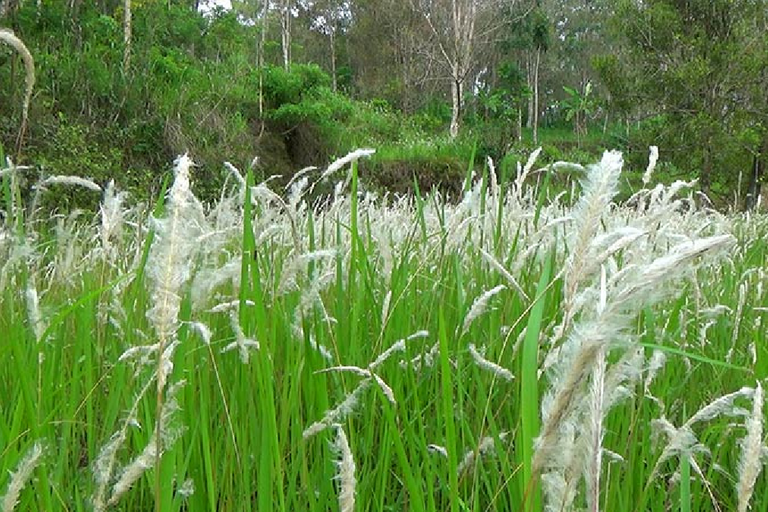
Cogon Grass (Source)
Cogon is mainly used as a roofing material for Bahay Kubo in my hometown. I remember my uncles used to say the word "Quatro Aguas" when building the roof of a Bahay Kubo. Quatro Aguas means the roof will have four sloping sides.
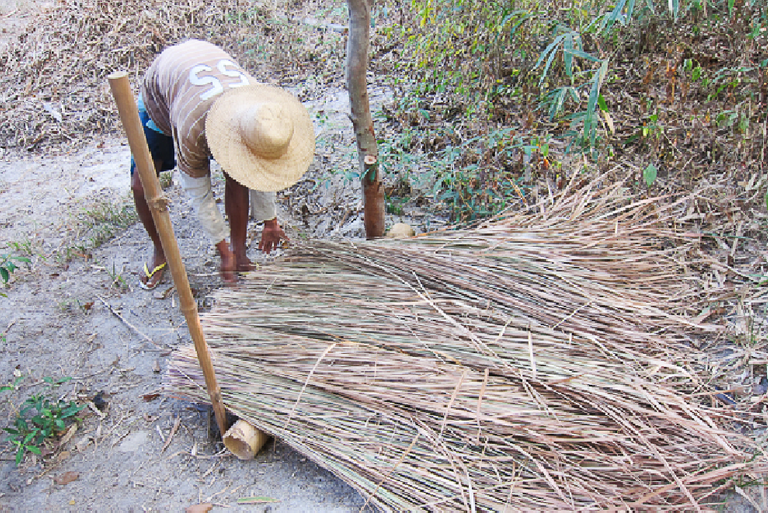
Dried Cogon Grass (Source)
In some places Nipa Palm leaves are used in absence of Cogon, aside from Nipa Palm leaves coconut leaves can also be used as a roofing material.
Walling Materials: Silag, Lid-da, Tanubong
In my hometown the most commonly used material in building the walls of a Bahay Kubo is Silag (Ilokano), in Tagalog, it is called Buli, it is known internationally as Buri Palm.
Buri is mostly used as walling materials in building the walls of the sleeping area, such as the bedroom of the family.
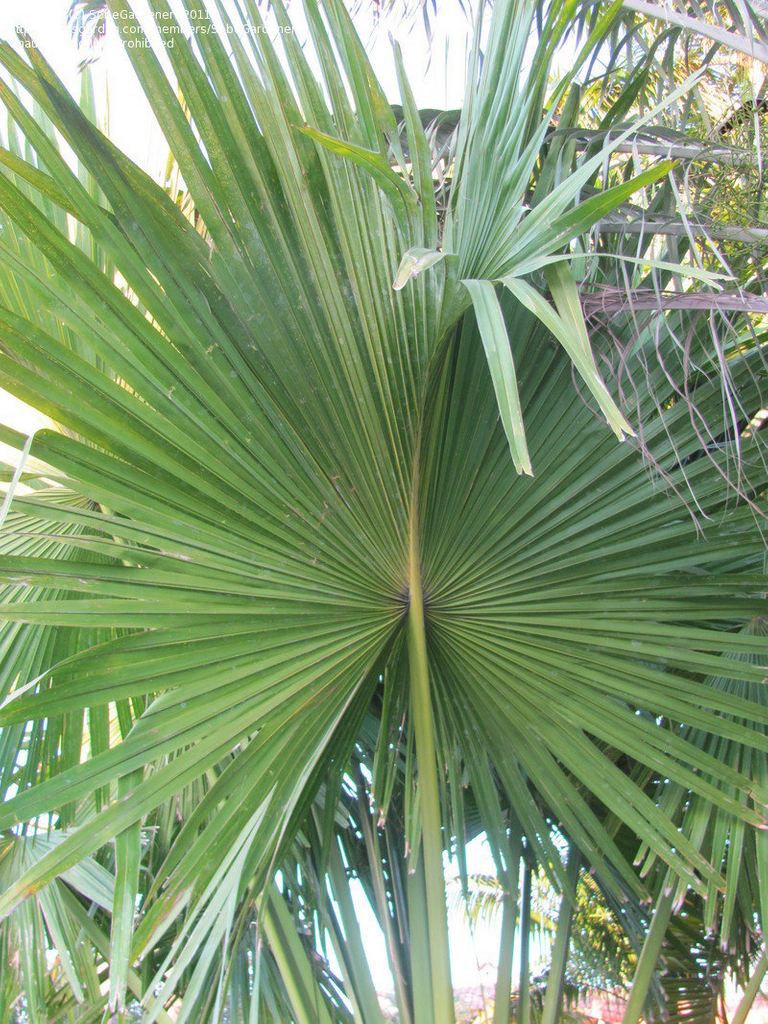
Buri Palm (Source)
Aside from Buri Palm, Lid-da (Ilokano) is also used as walling material but it is mainly used in building the walls of the kitchen. Lid-da is called Talahib in Tagalog and it is known in its English name as Wild Sugarcane or Kans grass.
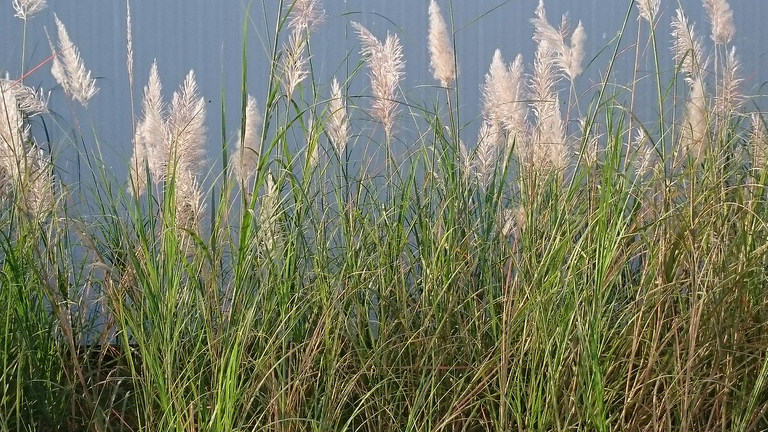
Wild Sugarcane/Kans Grass (Source)
Another material used in building the walls of a Bahay Kubo in my hometown is the Tanubong (Ilokano), which is called Reed in English, in Tagalog it is called Tambo.
Aside from the Buri Palm, if the Wild Sugarcane and the Reed are used in building the walls you will be needing more of them than using Buri Palm.
Not only that, of the three materials that I mentioned Reed is the most time-consuming to install.
Buri is the go-to material because you will only need a few and installing it consumes very little time.
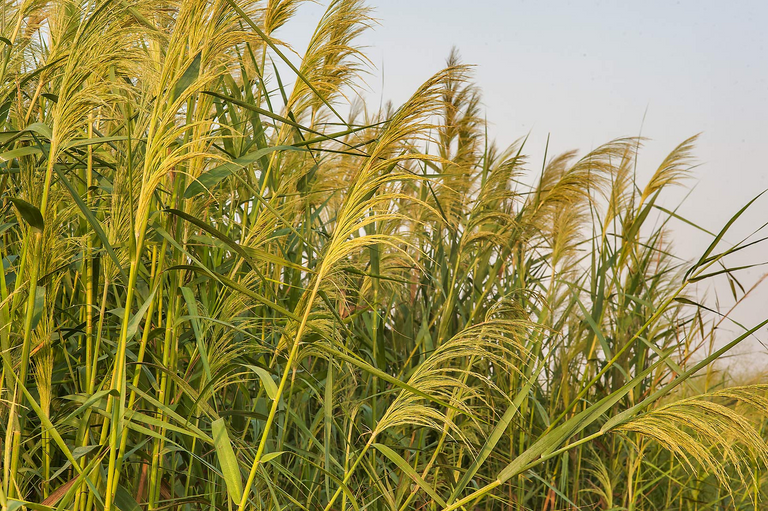
Reed (Source)
Frame Materials: Bayog Bamboo, Ipil-ipil, and Acacia
In my hometown, the most commonly used materials to build the frame of a Bahay Kubo is a combination of three materials such as Bayog Bamboo, Ipil-ipil, and Acacia.
Ipil and Acacia are mainly used as the main post of the frame of a Bahay Kubo. Most of the time Ipil is preferred because the Ipil tree is known to grow straight as opposed to the Acacia tree.
Ipil and Acacia are also used as the frame of the Bahay Kubo's floor. Bayog Bamboo is used to complete the rest of the frame.
Most of the time Bayog bamboo is used to construct the frame of the roof.
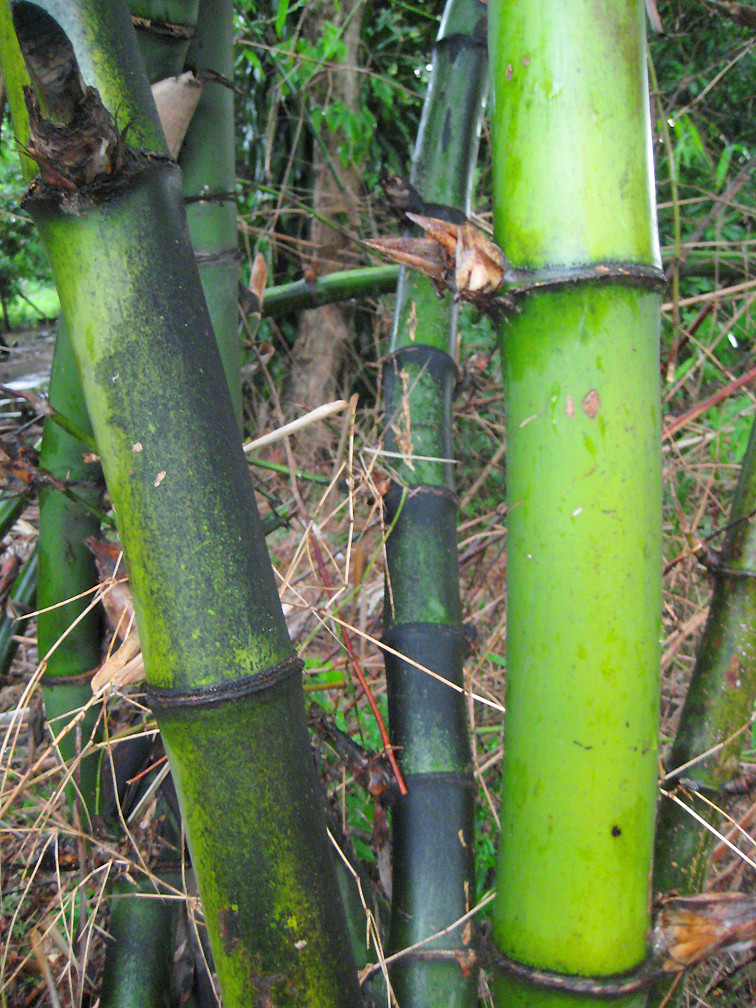
Bayog Bamboo (Source)
Floor Material: Kawayan Bamboo
In my hometown, there is no other material in building the floor of a Bahay Kubo than Kawayan bamboo because it grows straight as opposed to Bayog bamboo.
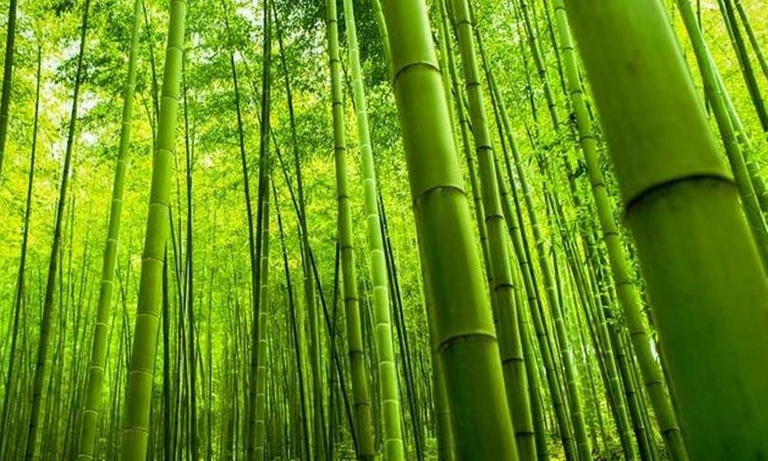
Kawayan Bamboo (Source)
Windows and Doors Materials: Reed, Buri, Wild Sugarcane
In my hometown, if Buri was used in the body walls of the Bahay Kubo then it will be also the one used to build the doors and windows, the same goes with Reed and Wild Sugarcane.
But sometimes my uncles would use combinations of the three materials (Reed, Buri, Wild Sugarcane).
Kawayan bamboo is mostly used to construct the frame of doors and windows of Bahay Kubo.
Bahay Kubo in Paintings
Bahay Kubo is so attractive it became the subject of paintings that sold hundreds of dollars. As for me, I am a fan of Bahay Kubo paintings.
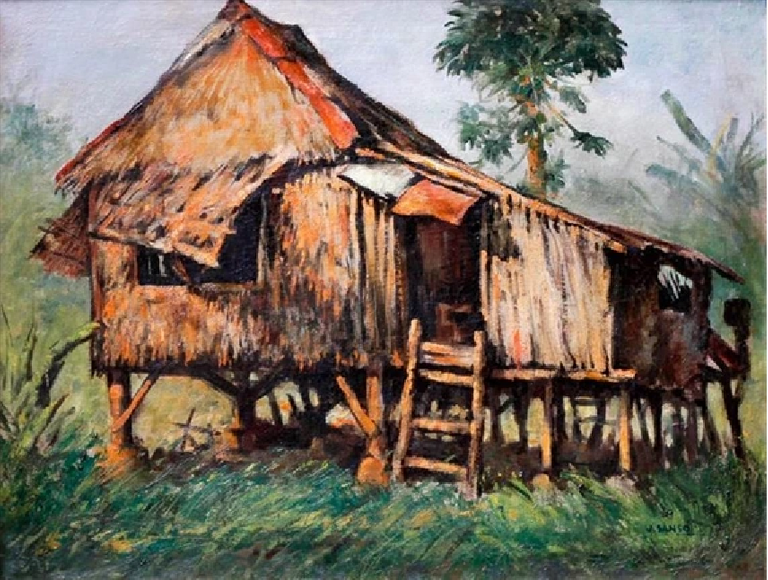
Bayanihan: a Traditional Way of Relocating Bahay Kubo
When I was young I witnessed firsthand a tradition in relocating a Bahay Kubo called "Bayanihan". In terms of Bahay Kubo, Bayanihan is an act of helping the owner of Bahay Kubo to relocate the house to a new place. I saw firsthand that it might be an exhausting act but the people participating in this act are all smiles, smiling is a typical trait of Filipino people.
Early Bahay Kubo in "Black and White" and "Monochrome"
Below are some images of Bahay Kubo in "black and white" and "monochrome".
Bahay Kubo Image Gallery
Below are some beautiful images of Bahay Kubo.


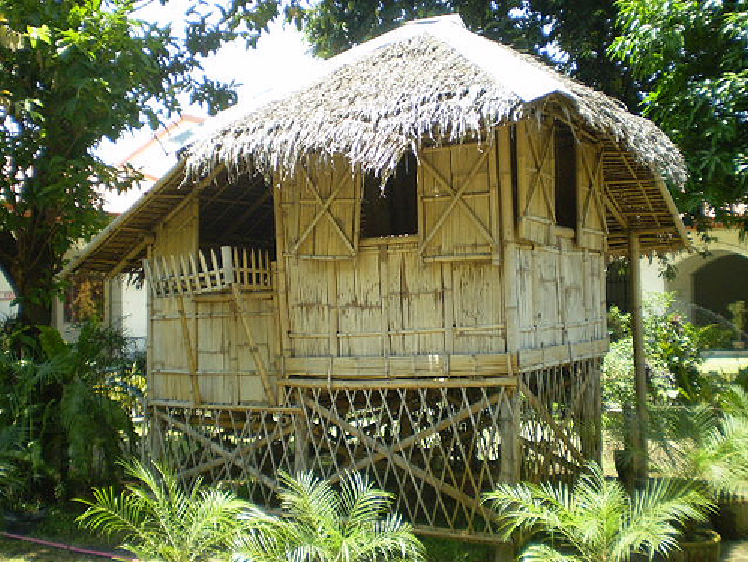
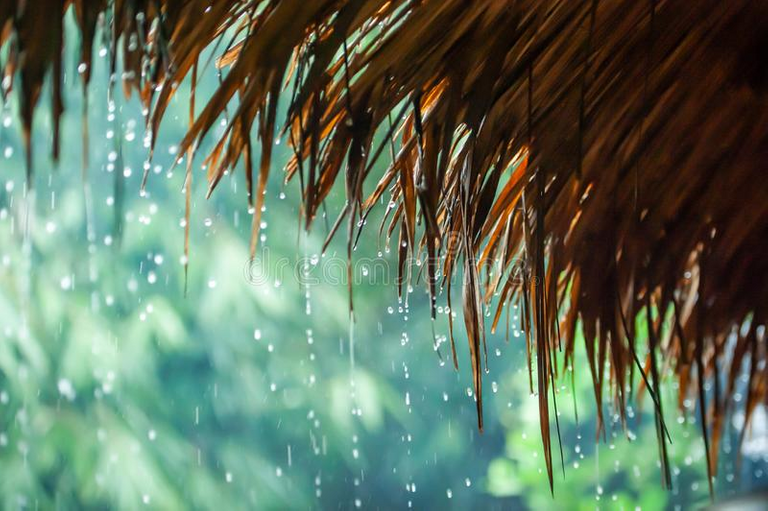
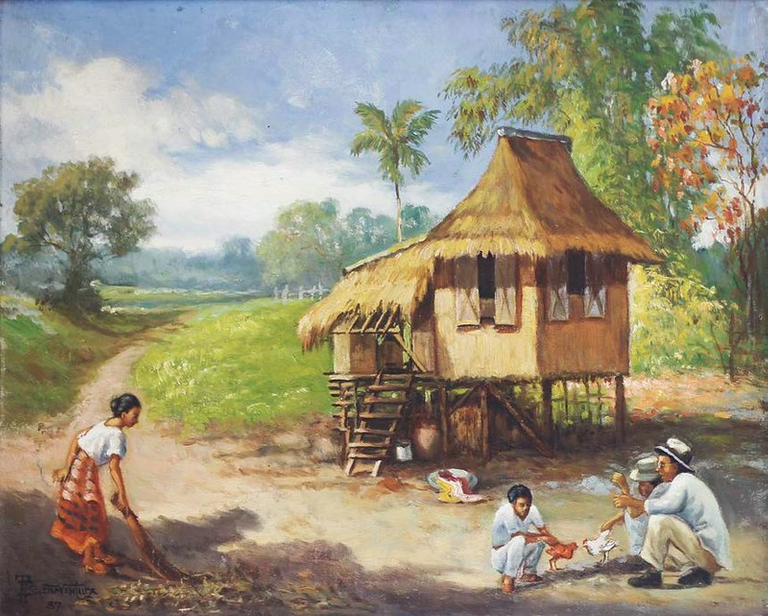
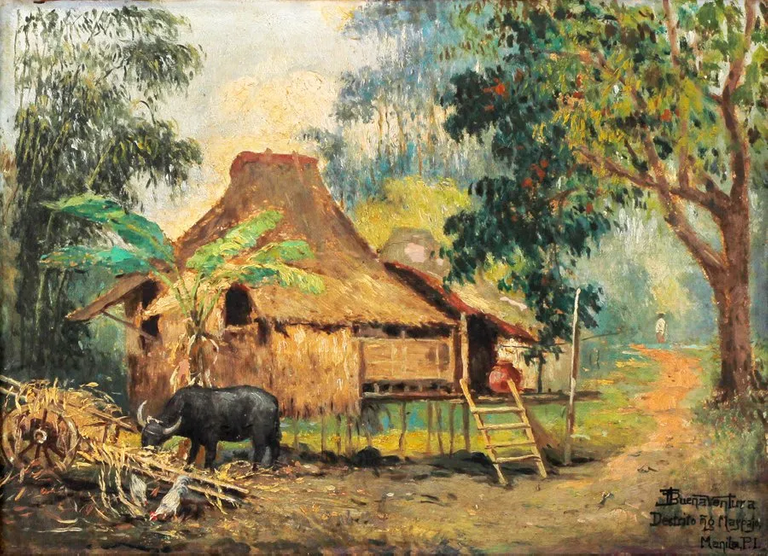
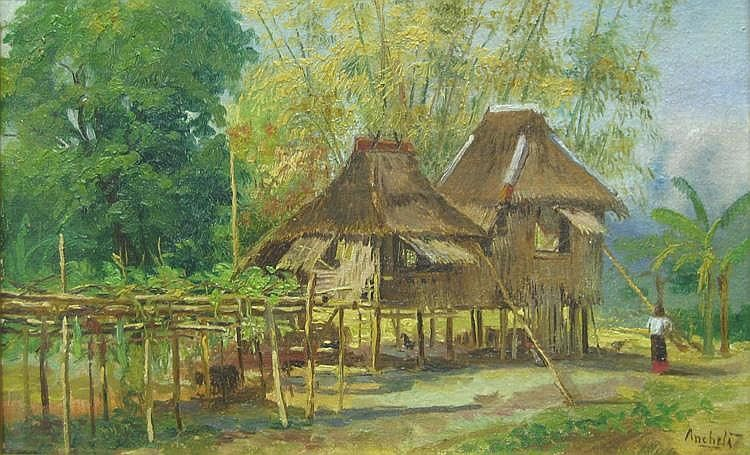

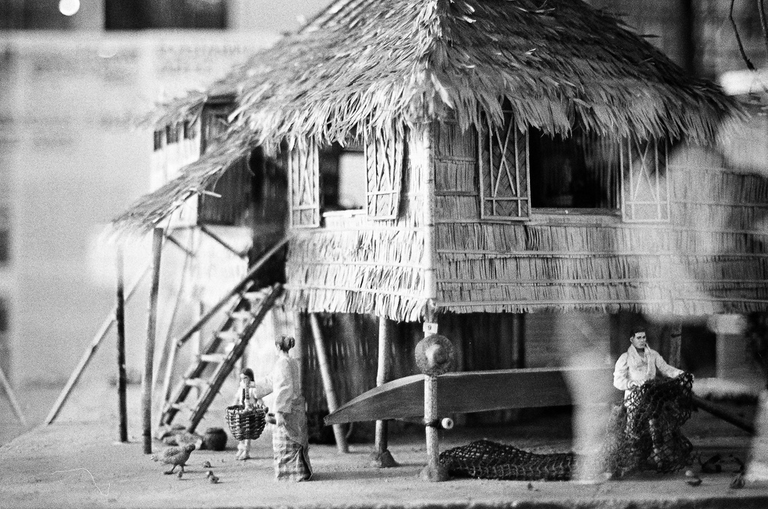
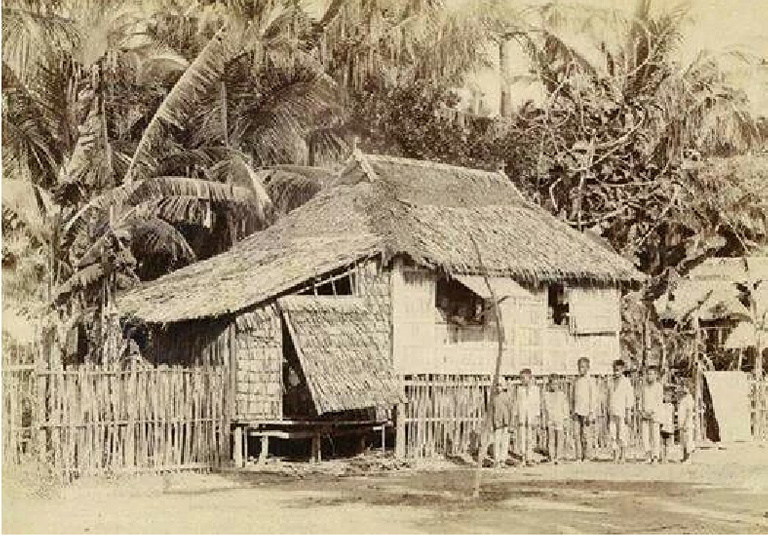
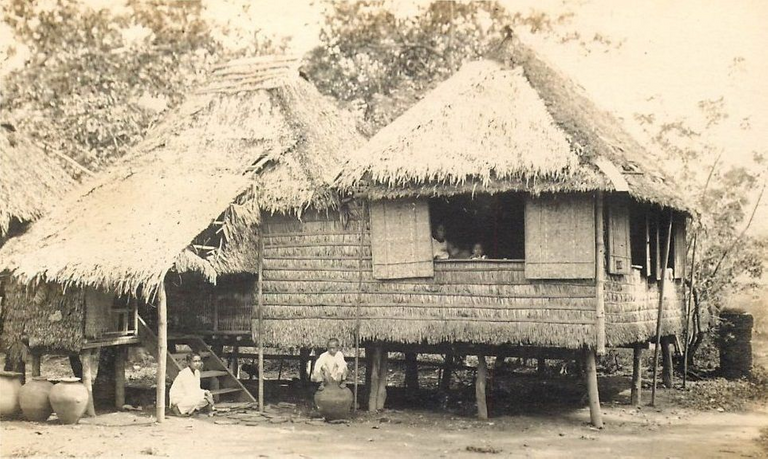
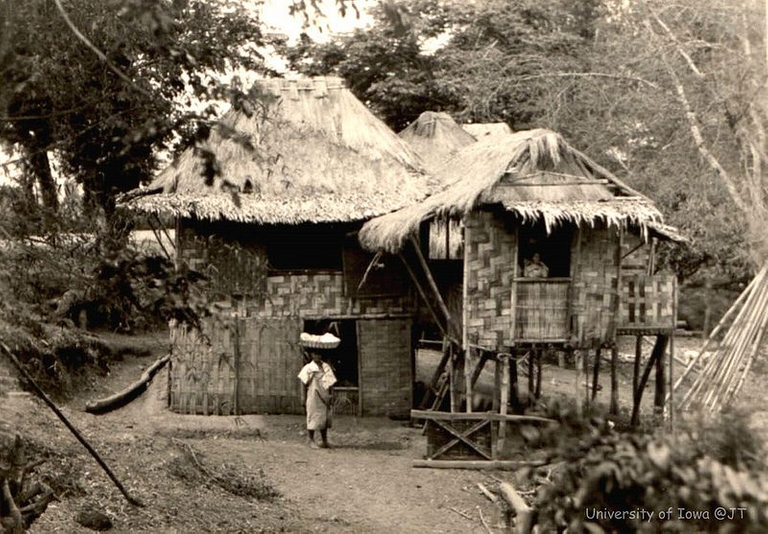
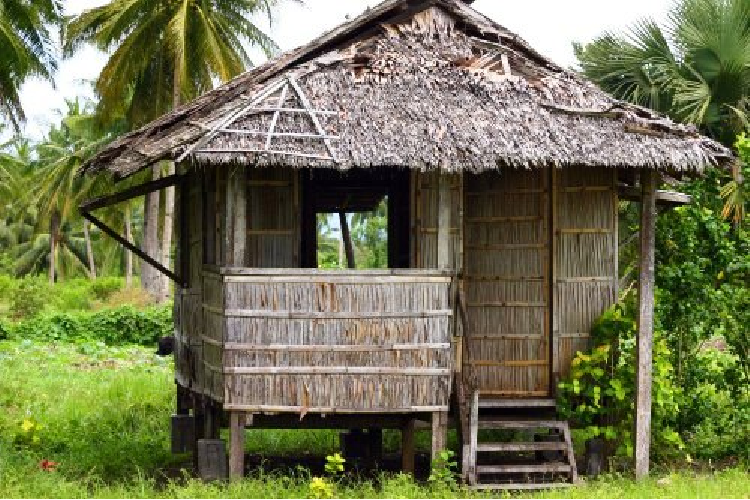
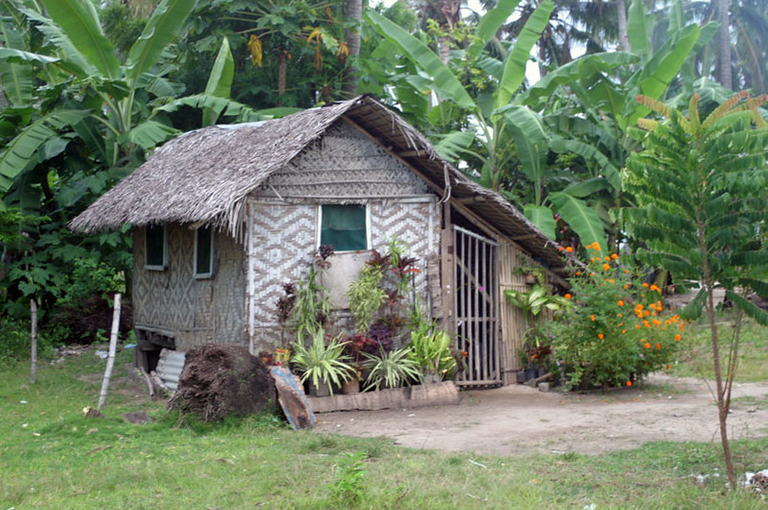

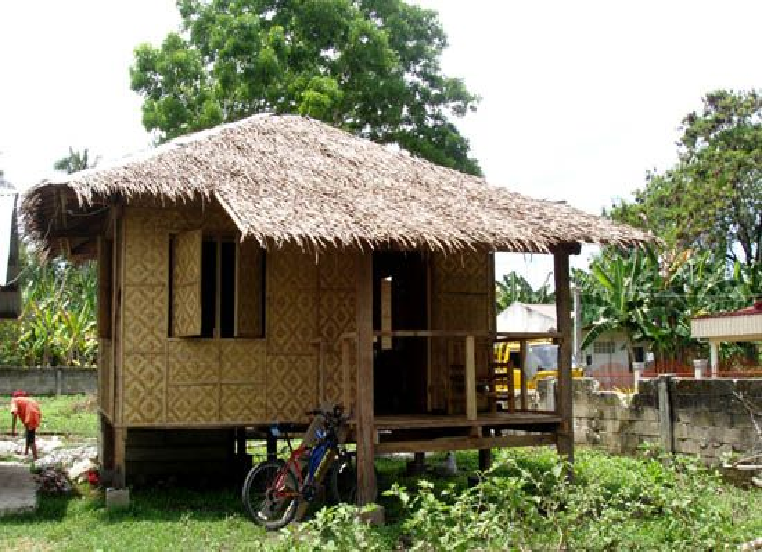
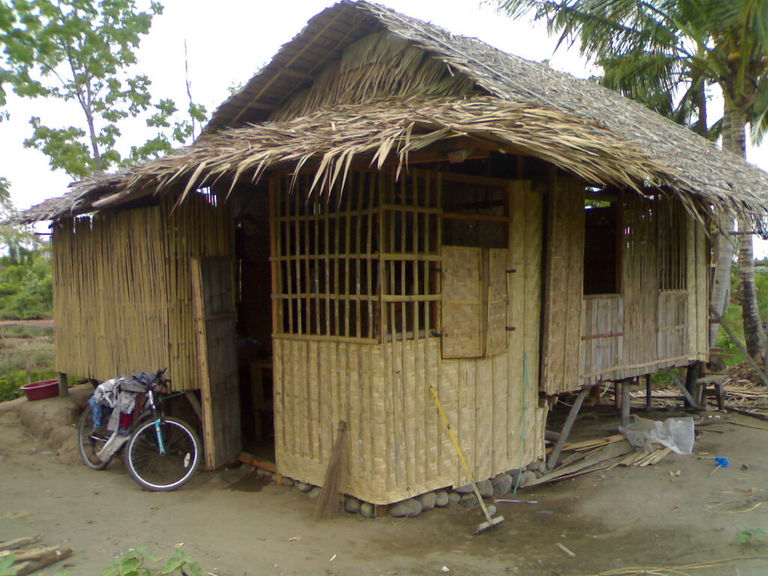
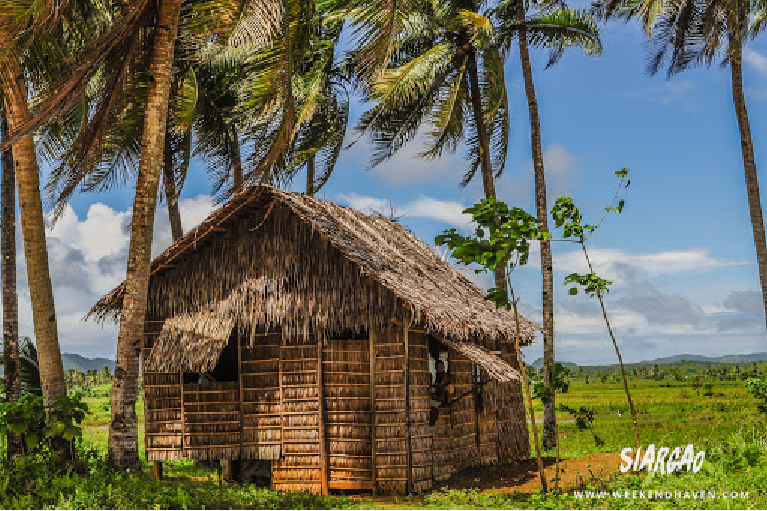
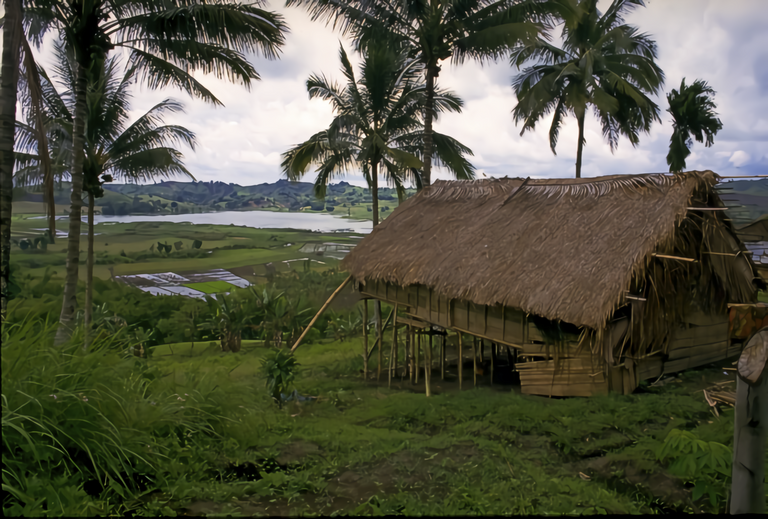
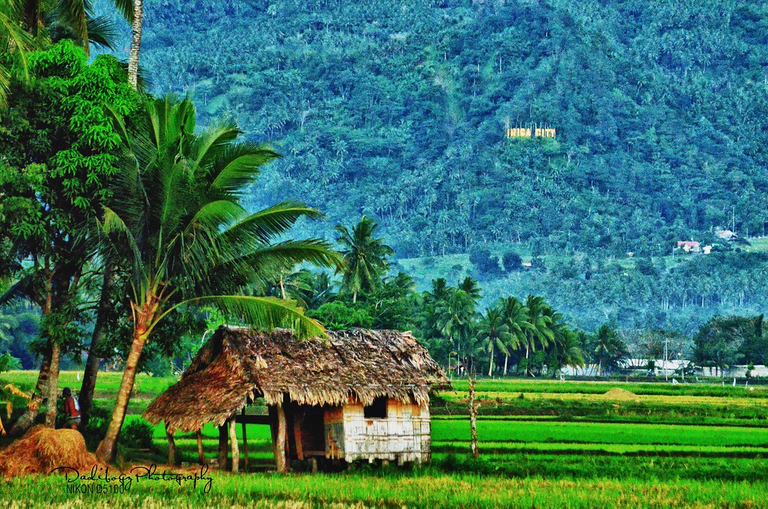
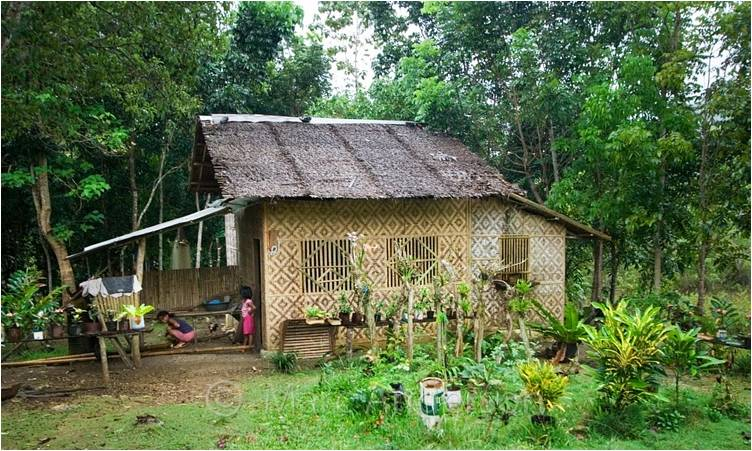
Hello @afterglow. Is it okay if you could increase your number of words to at least 500? This is for your latest post “Lamesang Kawayan” to be qualified for OCD nomination. Thank you.
Oh, thank you for the heads-up @aplusd , sure, no problem (^_^)
It is done @aplusd, thank you very much (^_^)
Oh wow! That's amazing. What are the huts like to live in? Do they keep from getting too cold or too hot? How often do they need to be replaced or rebuilt? Wonderful work.
Thank you.
It is a comfortable structure to live in, all the materials you need to build it are almost free (at least in my hometown).
If I remember it right, during the day the temperature will barely make you sweat, a little wind will make it cool inside. During nights of the rainy season and Christmas season, you will need a thick blanket to make you comfortable in your sleep.
If I remember it right, the roof can last up to 3-4 years before it needs to be replaced or augmented. The wall can last up to 4-5 years before it needs to be replaced/augmented. The frames will be the one that can last more than 5-6 years before it needs replacement.
Whenever you see a Bahay Kubo, you are immediately reminded of the Philippines. That's how that piece of vernacular architecture has become so iconic that it has already transformed into a household name around the world. Indeed, it's a proud cultural symbol of the Filipino's warm and friendly hospitality and "Bayanihan Spirit"! Thank you @afterglow for your nationalism and awesome publication!
Thank you @storiesoferne it's a pleasure sharing with the community. I actually felt some goosebumps and pride while writing this piece, it makes me more excited to go back to my hometown and stay there for good. By the way, in 2018 I still see some of my relatives still living in Bahay Kubo.
I have some experience in weaving roofing for the traditional bahay kubo. It is laborious but worth it. I even got a chance to learn to make "puso". !PIZZA
@afterglow! I sent you a slice of $PIZZA on behalf of @juecoree.
Learn more about $PIZZA Token at hive.pizza (3/10)
Thank you @pizzabot
Yes,.laborious indeed, but as you said it, it all worth it. As for me, I only experienced to help my father in insralling Buri on walls while he was helping my uncles building their bahay kubo.
Bahay Kubo is the best place to be for an afternoon nap!
Yes, you are absolutely correct.
Oh wonderful. I would love to visit such house which is totally made up of plants and trees. Incredible! How is the interior and is there washroom in it?
Anyways, loved the beautiful house.
Yes, there is also a washroom for this kind of housing. Nowadays, a family building this kind of housing always considers a complete build. There's the kitchen, the lavatory, the washroom, the living room, the dining area, the sleeping room, and a terrace.
In my hometown the interior of this kind of housing is made of "Kayawan Bamboo" (it is also used to build the flooring of sleeping rooms), the temperature inside is much cooler compared to a concrete house.
An architect friend built a 2-bedroom bahay kubo in their farmland in Dahilayan and we got to spend the weekend there. It was during the cold season and being in Dahilayan, it felt too cold inside the hut. It was the most relaxing break however. I can imagine though, that it has the best natural ventilation and during the day, it was really breezy and pleasant.
It's good to hear you have experienced Bahay Kubo. Would you like to build one if given the opportunity @discoveringarni?
Oh yes, I'd love to be able to build one for our own use one day. :) Have a great weekend!
Thank you for sharing this amazing post on HIVE!
Your content got selected by our fellow curator @priyanarc & you just received a little thank you via an upvote from our non-profit curation initiative!
You will be featured in one of our recurring curation compilations and on our pinterest boards! Both are aiming to offer you a stage to widen your audience within and outside of the DIY scene of hive.
Join the official DIYHub community on HIVE and show us more of your amazing work and feel free to connect with us and other DIYers via our discord server: https://discord.gg/mY5uCfQ !
If you want to support our goal to motivate other DIY/art/music/homesteading/... creators just delegate to us and earn 100% of your curation rewards!
Stay creative & hive on!
This is our Bahay Kubo. We used coconut leaves as roofing before but we had to change it all the time like 2 times a year. So most of the Bahay Kubo roofing at least in my place is replace with tin roof. The problem of the tin roof though it will save us from changing it over and over is it will be so hot when it is sunny but just right in rainy season.
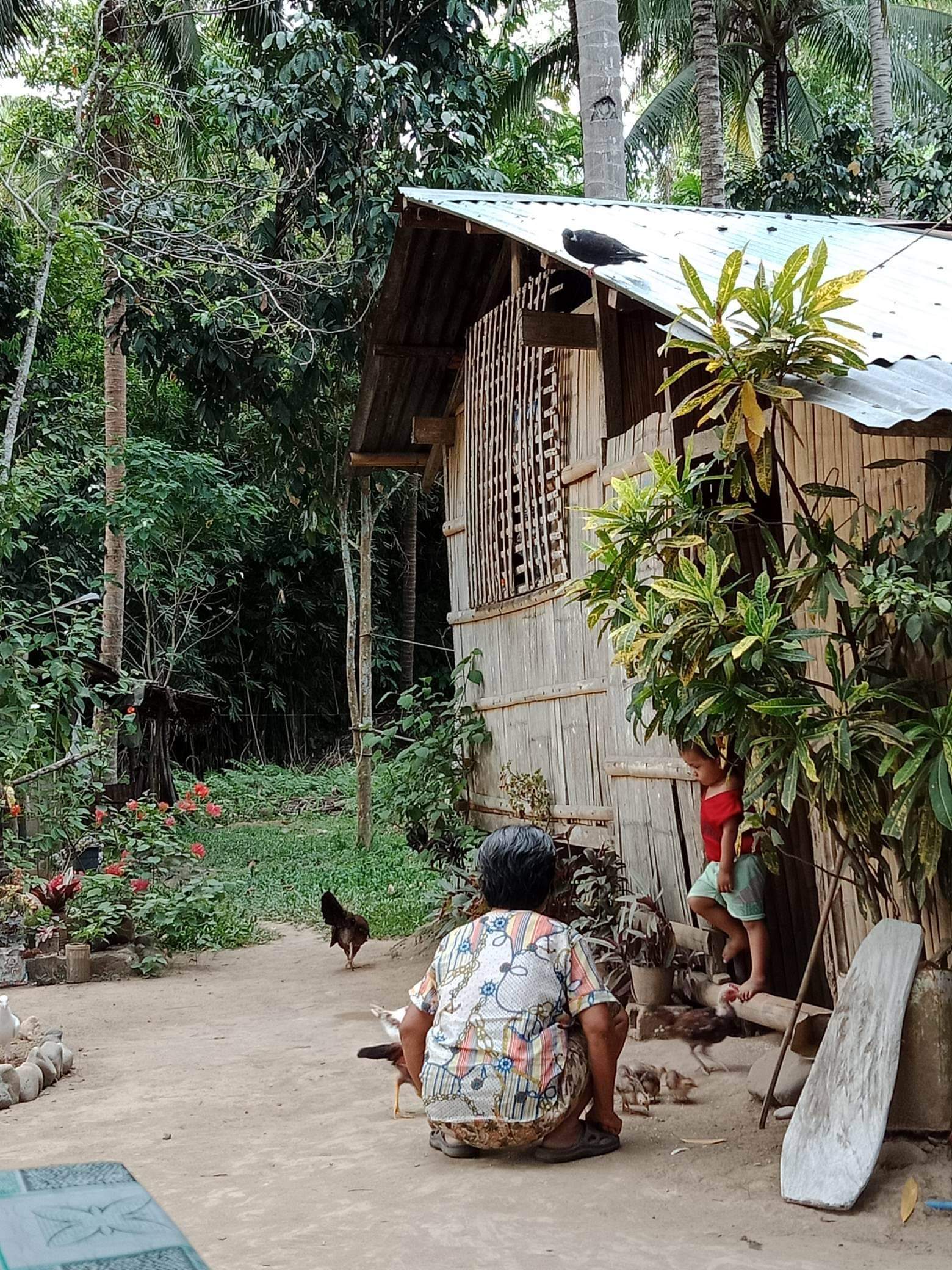
It is the norm now because the tin roof (galvanized iron sheets) has a longer lifespan, but it is hot during the summer.
I noticed the wall, is it built using Kawayan Bamboo?
Yes it is kind bamboo locally known as 'kajali.' The term when it is flattened like wall sheets is 'sa-sa'.
What a beautiful home. Natural materials, completely breezy and economical. It also showcases rich culture.
Wonderful publications pal!
Enjoy Sunday!
Beautiful indeed, and all natural. Thank you. Have a nice day.
Well done @afterglow! We're happy to inform you that this publication was specially curated and awarded RUNNER-UP in Architecture Brew #28. Congratulations!
Subscribe to Architecture+Design, an OCD incubated community.